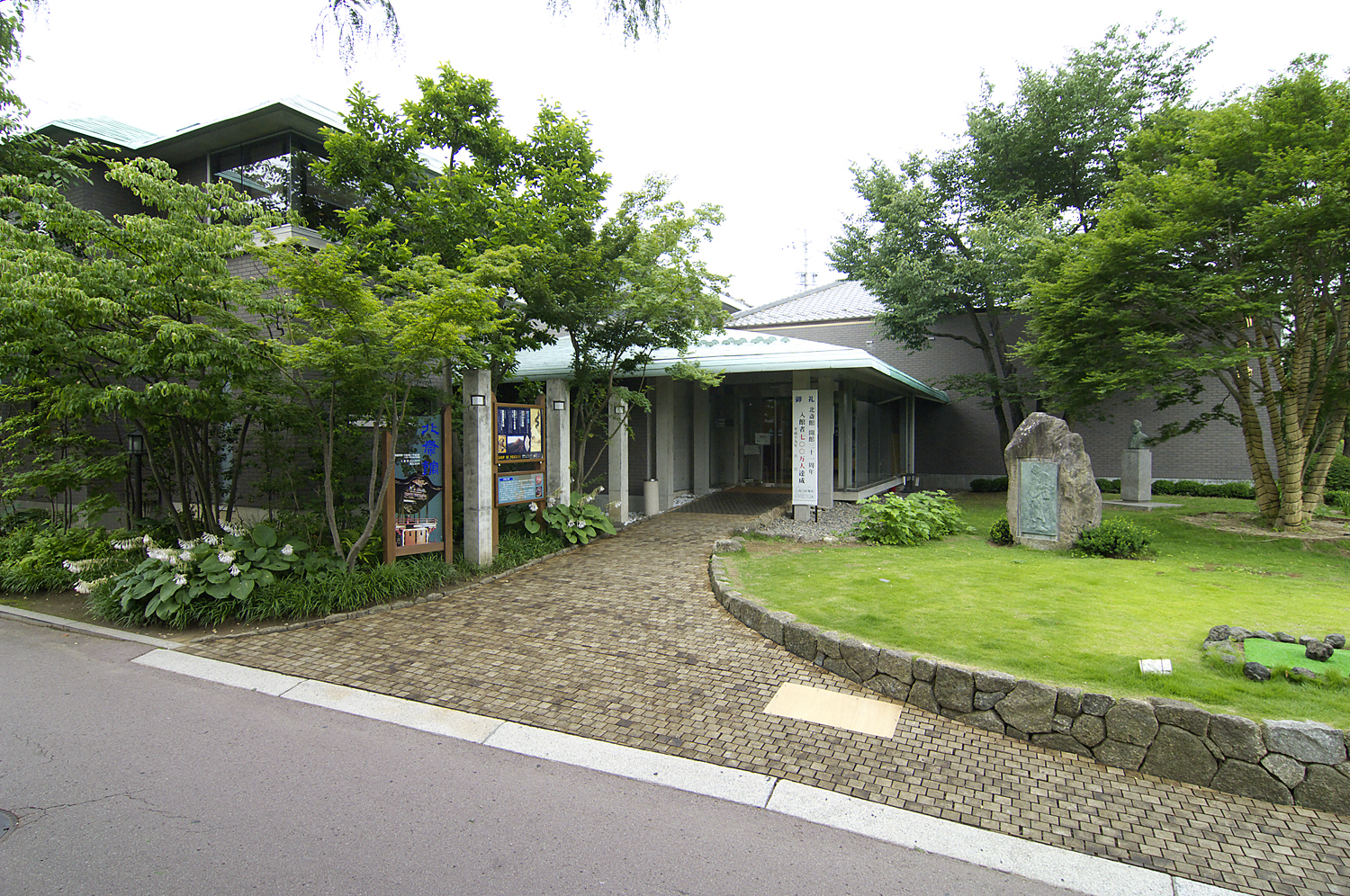48 Hours in Nagano City
Take a two-day trip around Nagano City to see beautiful temples, shrines, and the famous snow monkeys of Jigokudani!
Update:2020/01/17

In 1998, Nagano City hosted the Winter Olympic Games and introduced the world to the Japanese Alps, the Jigokudani Snow Monkey Park, and glorious Japanese powder (or, “japow”). But that isn’t all that the area has to offer. With beautiful Buddhist temples and Shinto shrines in the heart of Japan’s mountains, Nagano City is a hub of spiritual sites and natural splendor.
National Treasure Zenkoji

After arriving in Nagano, walk (or ride the colorful Gururingo bus) from the station to Zenkoji, following the wooden lanterns along Chuo-dori street. Eventually you’ll reach Motozen-machi with its cobbled streets and beautiful temple lodges. After passing through the Niomon and Sannomon gates, you’ll see Zenkoji—one of the largest wooden temples in Japan with over 1400 years of history.
Enshrined here is the first Buddhist icon brought from India to Japan, hidden in the rear of the temple behind several curtains. To get close to the icon and receive the Buddha’s blessing, buy a ticket for the kaidan meguri and take the stairs down into the pitch-black crypt passage. If you touch the key below, you will be guaranteed rebirth in the pure land.
A volunteer English-speaking guide from the Bonsho-no-kai can also explain the significance of Zenkoji’s many statues and buildings. On an hour-long tour, you can see several sub-temples, climb up to the Sannomon gate’s observatory and learn more about Nagano’s treasured monk, Binzuru.
Peace, Quiet, and Cake in Obuse

Afterwards, head to the Nagano Dentetsu train station and take a 30-min. train to Obuse, a quaint spot near the city full of earthen-walled storehouses, chic cafes and eateries. Known for its agriculture and chestnuts especially, Obuse has plenty of shops that offer delicious pastries and sweets like Mont Blanc, apple tarts, and gelato. When you arrive, have lunch at Chikufudo or indulge your sweet tooth at Patisserie Rond-to or Obuse Entotsu before taking a walk around town.
One of the sweetest parts of Obuse isn’t its cakes, but rather its collection of artworks. The artist Katsushika Hokusai—known for “the Great Wave Off Kanagawa”—spent many years here in his old age. The Hokusaikan museum was built in his memory and stores many of his woodblock prints and sketches. In Ganshoin temple, a short walk from town, a stunning Hokusai painting remains on the main hall’s ceiling.

Return to Nagano in the evening and unwind with some dinner and drinks. Nagano Station has plenty of restaurants nearby, from casual izakaya pubs to fine Italian dining, and you can find plenty of ramen shops and cheap drinking options in the Gondo arcade. Or for a healthy dinner made with fresh, local meat and vegetables, we recommend Yayoiza near Zenkoji.
Day Two in Togakushi

In contrast to Nagano City’s Buddhist temples, the woods of Togakushi are dotted with Shinto shrines. For over 1000 years, ascetic monks have traveled here seeking training and enlightenment.
Togakushi’s Shinto origins go all the way back to Japanese legend. In one story, the sun goddess Amaterasu seals herself in a cave behind a large rock door, plunging the world into darkness. When the other deities band together and dislodge it, they throw it into the sky so that the goddess cannot hide again. The door eventually fell on central Honshu, becoming Mt. Togakushi (to = door, gakushi = hiding). The area at the base of the mountain still buzzes with spiritual energy.
Of the five shrines around Togakushi, the Okusha shrine is one of the most popular to visit. Take the Togakushi line bus from Nagano Station all the way to the Okusha shrine stop, where you’ll find a soba shop, ice cream stand, and a large stone torii gate marking the entrance. The Okusha shrine is a 30-minute walk from here through the woods. Along the way, you’ll walk through a beautiful lane of 400-year-old cedar trees before reaching the shrine at the base of the mountain. The truly adventurous can hike Mt. Togakushi itself—but be warned, it’s not for the faint of heart.
Back at the entrance to the Okusha shrine walk is the Togakushi Ninja museum and Karakuri trick house. Due to the remoteness of this area, ninja trained here during the Warring States Period, and several martial artists keep the Togakushi style of ninjutsu alive today. At the museum, you can see photographs of actual techniques used by such spies as well as the tools of the trade. Visit the trick house and find your way through a maze of trap doors and illusions.
Make your Own Soba for Lunch!

When you get hungry, take the bus towards Nagano and get off at the Soba Hakubutsukan stop. Here, you can take a soba-making lesson and make your own lunch! The staff guide you through the process of mixing, kneading and cutting the dough, then boil the noodles and serve them with tsuyu dipping sauce. While the dish looks deceptively simple, it’s not so easy to make!
Finishing Up

Finally, head back to Nagano for some shopping by the station. The Midori mall has popular clothing brands, the Tokyu Hands stationery store, and an entire floor dedicated to Nagano goods and souvenirs. Arukuma plushies and Shichimi spice mixes are popular gift choices, and you can find local meats, miso, and sake in the back. At the Shinshu Kuraudo bar, you can try flights of sake while enjoying appetizers of wild game or oyaki dumplings.
From here, you can head back towards Tokyo or continue along to Niigata, Toyama, or Kanazawa. Or, you can visit some of the prefecture’s other famous sites, such as Matsumoto Castle, Kamikochi, or the Snow Monkeys. With its central location, Nagano City offers easy access to outstanding historical and natural sites both in its backyard and across the Japanese Alps.
















